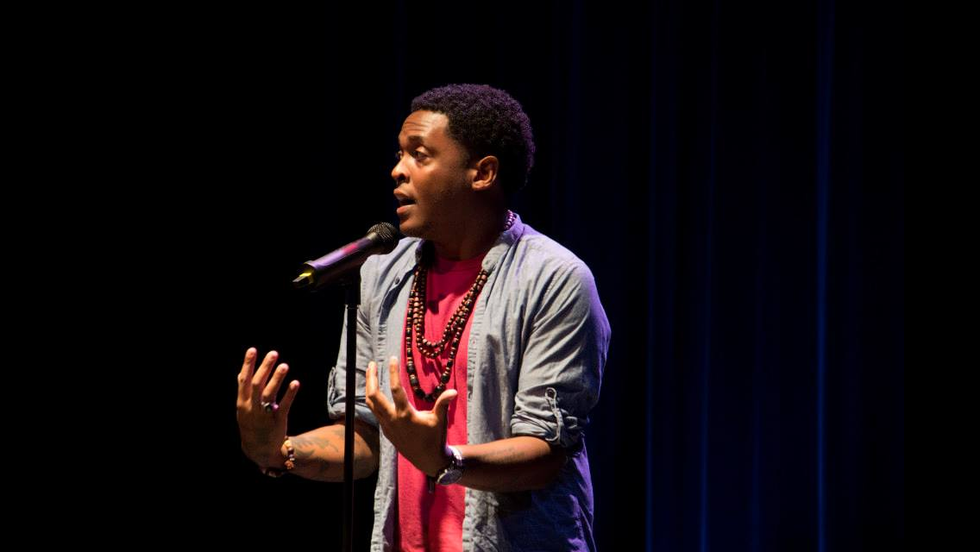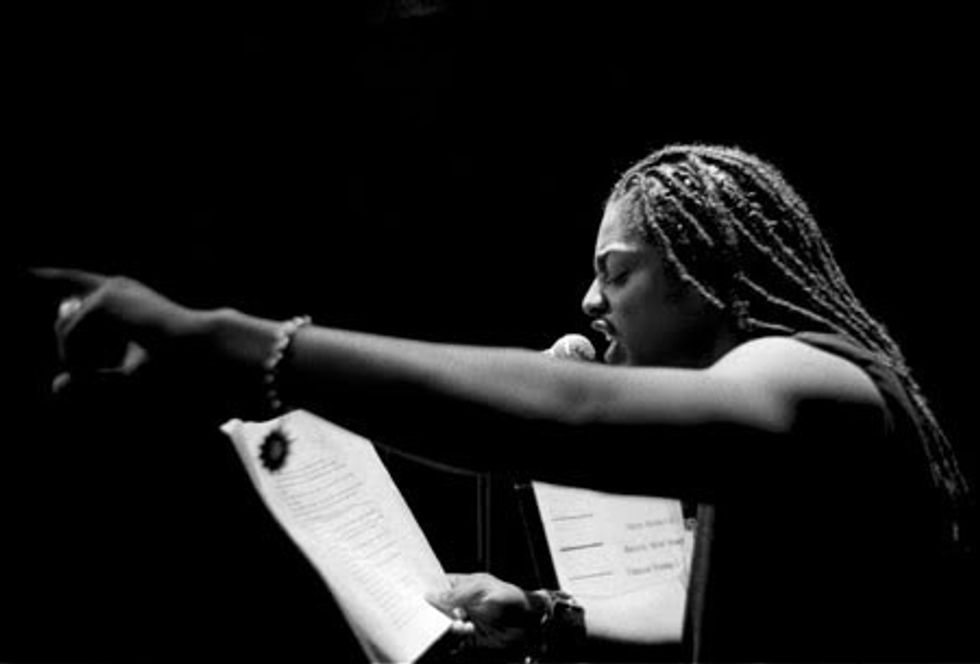Poetry is changing because the methods we use to reach the masses are changing. Everything is adapting all the time: language, technology, and the human race. YouTube creates a world of knowledge at our fingertips by allowing users to upload any kind of video they create and consequently share their knowledge and stories on a global platform. It's possible to learn endless information without ever reading a thing. In our modern world, media is a constant simulant to the human brain. In order to keep reaching and connecting on a personal level with their audiences marketing companies, social advocates, writers, etc., have to keep adapting.
Where did this "slam poetry" come from?
Poetry itself, as a literary form, has only been around for a few centuries, but poetry as an art has been around since the beginning of time. In the era B.C., when humans didn’t yet write, they communicated in, what I refer to as, singsong-like sounds (sort of the beginning of spoken word poetry). It wasn’t until 1985 when a construction worker, Marc Smith, created a local poetry reading series at the Green Mill jazz club in Chicago and took poetry back to its roots (Check out the full history here). He was just one man, but his poems were more than your typical poetry reading. This was a performance where his pitch, tone, gestures and dynamics were all part of a delivery that would encourage his listeners to tune in to the words he spoke.
Since then, slam poetry has become a sensation and today, there are national competitions, organizations and clubs completely dedicated to slam poetry. For the record, the difference between spoken word poetry and slam poetry is very little, except slam poetry is when spoken word is performed at a competitive event. The growing popularity of slam poetry is not only a literary expression of the people, but it is also what our technology-focused nation needs in a time of change—and it has the power.
Why videos?
We’ve all done it. We see an interesting title of an article on Facebook, and instead of reading the article, we scroll down and watch the video (and sometimes not even the whole video). With attention spans like that, it makes slam poetry more appealing and accessible; slam poems average the length of a quick three minutes. It’s a short time for us to have to sit and be entertained, and when used properly, can be the most effective way to reach an audience. Technology is power, and slam poets are taking advantage of this in a very effective way. Poetry is adapting to its audience, an audience with a small attention span that is ever-decreasing. Those who are successful at advocating change cater to their intended audience.
What does the performance do for us?
These performances, like any piece of literature that writers work on, is edited and edited over and over again. Although slam poetry will not read off the page like Robert Frost poems would, during this time in the world when people tend to be social media obsessed and less likely to pick up a book, we do not need another Robert Frost. We need words that shout at us.
This Human interaction that slam poetry provides affects people by taking away the option to ignore the story being shared with them. It forces them to listen and connect to the speaker and to see them as a full human being with complex stories to share and learn from (as opposed to words on a page). Any effective speech includes literary devices and gestures, just like slam poetry does. If reading words on a page had the power to do what speaking could do, then all of the President’s inaugural addresses would be printed and distributed to the nation instead of spoken from behind a podium.
Okay, so why does it matter?
Slam poetry gives people the power to make non-violent statements, while still providing the assertive technique necessary to make change. The bottom line is that we’re much more likely to listen to our peers who understand us. Slam poetry has opened up a dialogue about issues that matter to young people and the ideals this generation needs to be thinking about.
As a lover of traditional poetry, it is disheartening to think that written poetry may be having a lesser impact than ever. But, if nothing else, slam poetry is keeping, what’s left of poetry, relevant to a modern audience that might not have taken an interest to poetry otherwise. I encourage people to express themselves by vocalizing what they’re passionate about—what they feel others should be passionate about. I also encourage people to listen to those who take the time to write beautiful pieces of slam poetry for their audience. One three-minute video could spark a passion of yours that could impact not only your life, but also, the world.


















